This 2-pronged approach is the best way to keep your low back healthy
Taking the time to incorporate low-back workouts into your routine now can help prevent back pain later.The low back is not typically an area that many clients ask me about — until they start experiencing pain in the area.
But the truth is: The low-back should be a priority in our fitness routine to keep it strong and healthy, and prevent pain and injury from occurring in the future. The best way to do this is a two-pronged approach: strength exercises and stretches that specifically target the muscles of the low back and exercises that strengthen the core in general, which supports and stabilizes the spine, reducing stress on the back.
For more core workouts — plus meal plans, fitness challenges, walking podcasts and inspiration — download the Start TODAY app!
Jump to:What are the low-back muscles?
Benefits of low-back workouts
Low-back exercises
What are the low-back muscles?
The muscles of the low back — also known as the lumbar muscles —provide stability, support and movement to your spine. There are several key muscles in this area, including:Erector spinae: The largest muscles in the low back. They run along the sides of the spine and help to maintain an upright posture and extend the spine. These muscles are engaged when you stand straight or lean backward.
Quadratus lumborum. These muscles are located on both sides of the low back, connecting the pelvis to the lower spine. They assist in bending to the side, rotating the trunk and stabilizing the spine during movements like lifting or twisting.
Multifidus. These are deep muscles that run along the spine, providing stability and support. They play a crucial role in maintaining proper spinal alignment and controlling small movements of the individual vertebrae.
Benefits of low-back workouts
The low back, or lumbar region, plays a key role in supporting the upper body and facilitating movements such as bending, twisting and lifting. And like all muscles in the body, unless we actively work to keep them strong, they will weaken over time.
It’s not uncommon for someone to pull a muscle in this area due to muscle imbalances — even when doing seemingly simple movements like bending down to pick something up. In fact, according to a study published in The Lancet Rheumatology, low-back pain remains the leading cause of disability globally, impacting 619 million individuals. That number is expected to rise to 843 million by 2050!
That’s why it’s crucial to strengthen both your low-back muscles and your core to prevent injury. Strengthening and stretching the muscles of the low back can help improve posture, enhance stability and prevent future injury. Low-back exercises can also alleviate existing pain and discomfort by increasing flexibility and reducing muscle tension.
Lower-back workout: 15 exercises to strengthen the low back
Incorporating these exercises into your routine can lead to better overall spinal health and a more active, comfortable lifestyle. Add a few to your current strength-training routine or string them all together for a low-back focused workout. (As always, be sure to get the OK from your doctor before starting any exercise routine!)
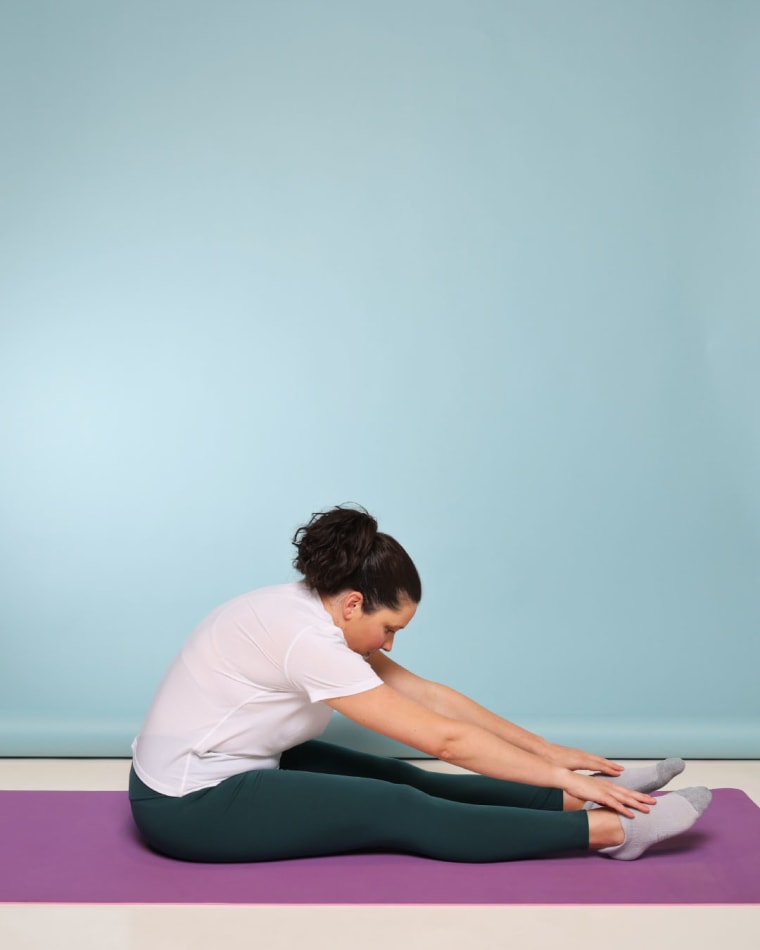 Tyler Essary / TODAY
Tyler Essary / TODAYSeated toe touch
Begin on the floor with your legs straight in front of you. Stretch your arms out in front of you and lean forward, hinging at the hips, reaching towards your toes. Hold for 10 seconds and slowly lift back to the starting position.
 Tyler Essary / TODAY
Tyler Essary / TODAYStanding forward fold
If you have a hard time reaching toward your toes in a seated forward fold, performing the move standing allows gravity to help you get deeper into the stretch. Start standing with feet hips-width apart. Bend at the waist, reaching your hands toward the ground and letting your head hang between your arms. Hold here for 10-20 seconds, letting yourself sink deeper with each breath.
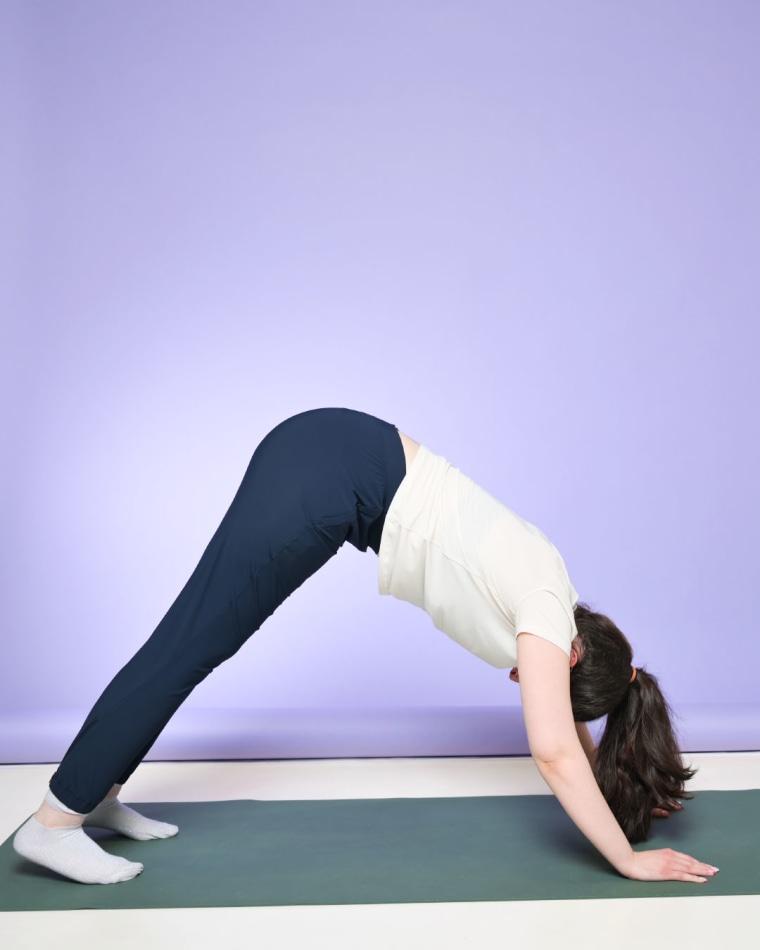 Tyler Essary / TODAY
Tyler Essary / TODAYDownward facing dog
Start in a plank position with your shoulders over your wrists. Pull your navel in toward your spine and reach your butt up toward the ceiling. Form a “V” with your body with your heels reaching down toward the ground. (It’s OK if they are off of the ground.) Come forward into plank position, and repeat 10 times.
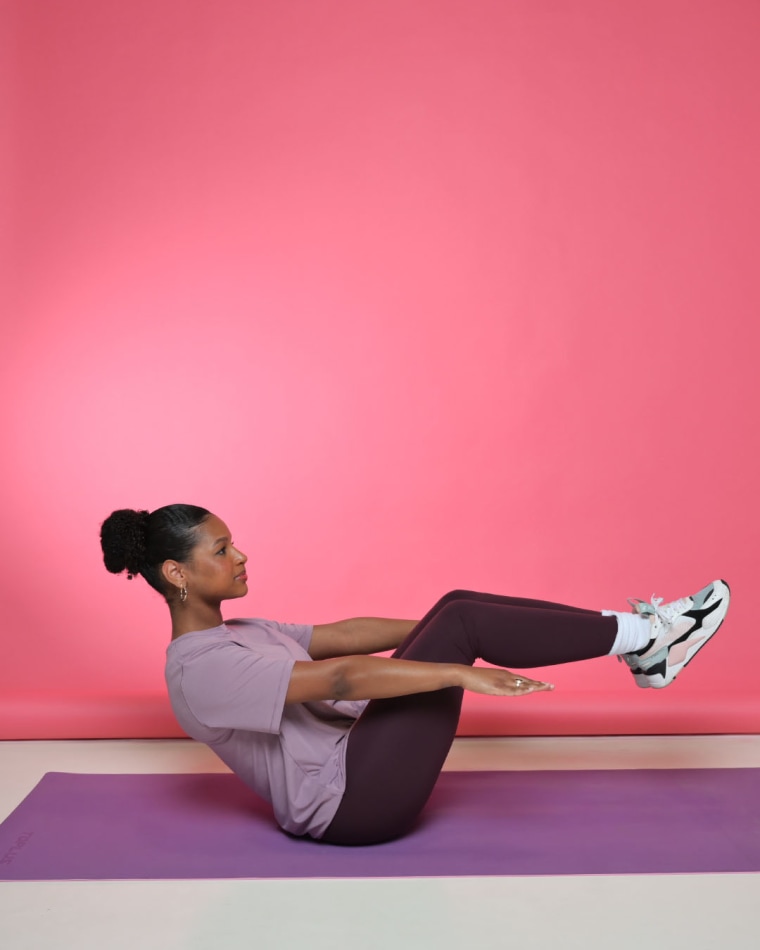 Tyler Essary / TODAY
Tyler Essary / TODAYV-sit
Seated on a mat, engage your core muscles and gently lean back a couple of inches. Slowly lift your legs up in the air so that are in a table-top position. Reach your arms straight out in front of you so that they are parallel with the mat. Keeping your core engaged, extend the legs straight up to a 45-degree angle, forming a “V” shape with your body. If you feel balanced here, attempt reaching your arms up toward the ceiling. You always have the option to leave them straight out in front of you. Hold this position for 10 seconds. Keep the shoulders relaxed, abs pulled in and the inner thighs squeezing together.
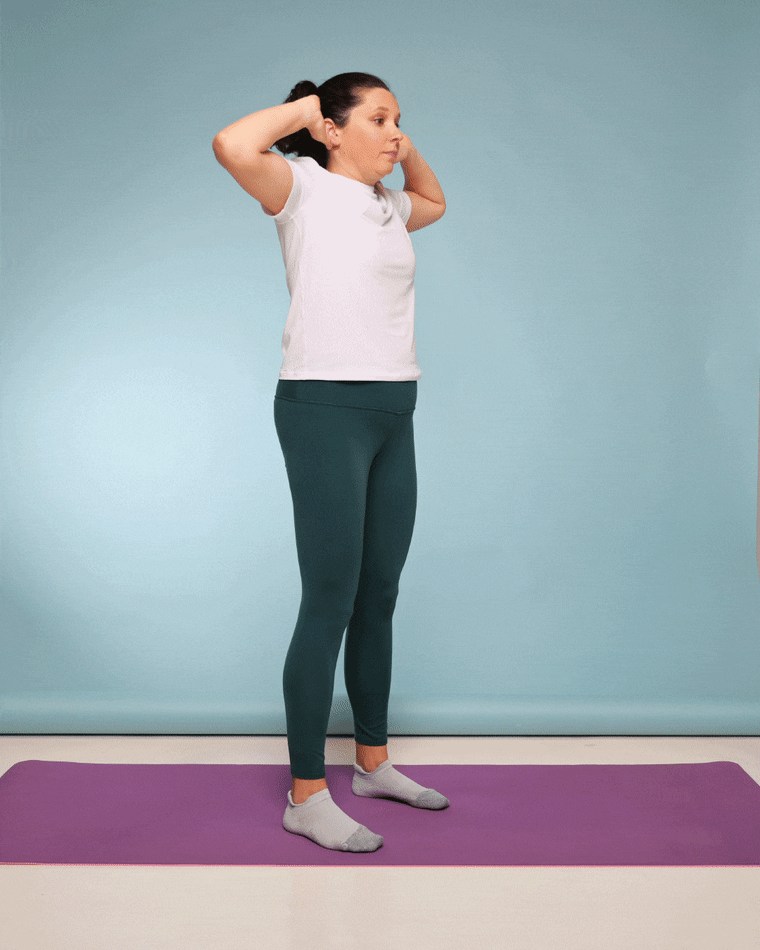 Tyler Essary / TODAY
Tyler Essary / TODAYGood mornings
Stand with your feet hip-distance apart and hands behind your head. Add a slight bend to your knees, tucking your pelvis under and engaging your core. Keeping your back straight, hinge at the hips, lowering your torso toward the floor. Slowly lower down until your upper body is parallel with the floor, pause, and then return back to the starting position. Repeat for 10 repetitions.
 Tyler Essary / TODAY
Tyler Essary / TODAYGlute bridge
Lie on your back with your feet flat on the floor and knees bent. Engage your core, pressing your low back into the ground. Then, slowly curl your back off the ground driving your hips toward the sky. Do not hyperextend your back by lifting up too high. Stop when your hips have created a straight line from your knees to your upper back. Hold the position, then slowly lower back down to the starting position. Repeat for 10 repetitions.
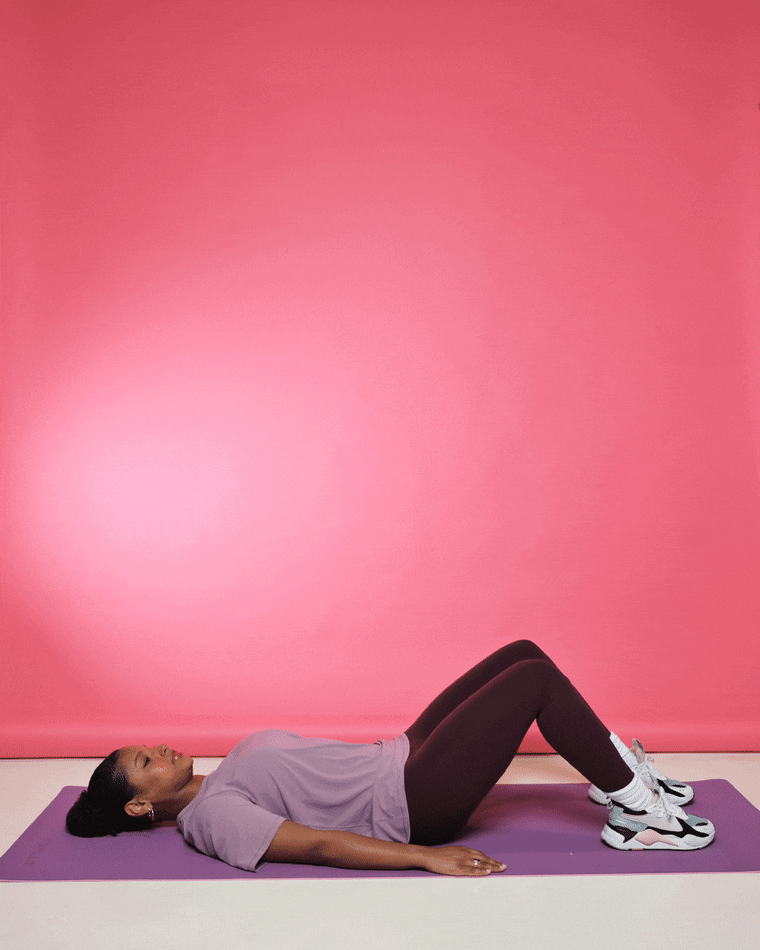 Tyler Essary / TODAY
Tyler Essary / TODAYPelvic tilt
Lie on your back, bend your knees and place your feet flat on the floor. Make sure your feet are hip-width apart and your arms are reaching down towards your feet. Then take a deep breath, and feel your lower back arch slightly off of the ground. Then exhale as you tilt your pelvis forward and press your low back into the ground. Pull in the naval toward your spine as if you’re zipping into a tight pair of pants. Release and repeat 10-12 times.
 Tyler Essary / TODAY
Tyler Essary / TODAYForearm plank
Start on your hands and knees on the mat. Line your shoulders up over your wrists. Come down on to your forearms and walk your knees back a few inches. Pull your navel in toward your spine, tuck your toes under and lift your legs up off of the ground. Squeeze your quads and reach your heels toward the back of the room. If you have a mirror, check yourself out to ensure that you’re in one straight line! Engage your core, maintaining a straight back. Hold the position for 30 seconds. Rest, then repeat.
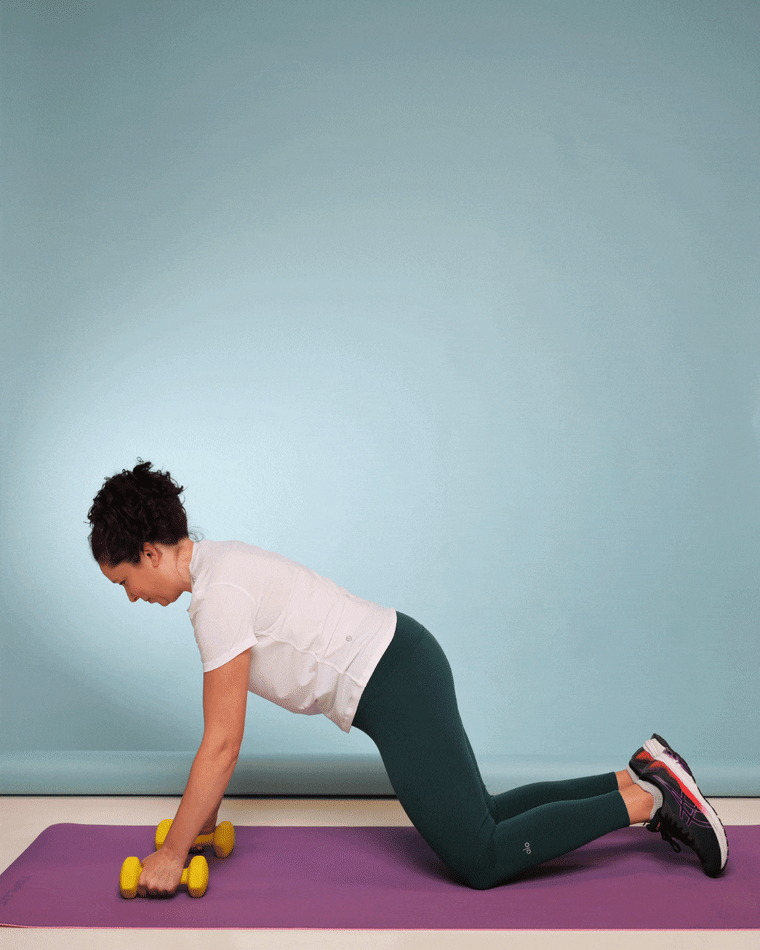 Tyler Essary / TODAY
Tyler Essary / TODAYModified renegade rows
Start in a high-plank position. Engage your core before raising one of your hands off of the ground, pulling your hand up to your shoulder and hugging your elbow in toward your side to engage your upper back. Return to the starting position, then repeat the movement with the other arm. Complete 10 repetitions on each arm.
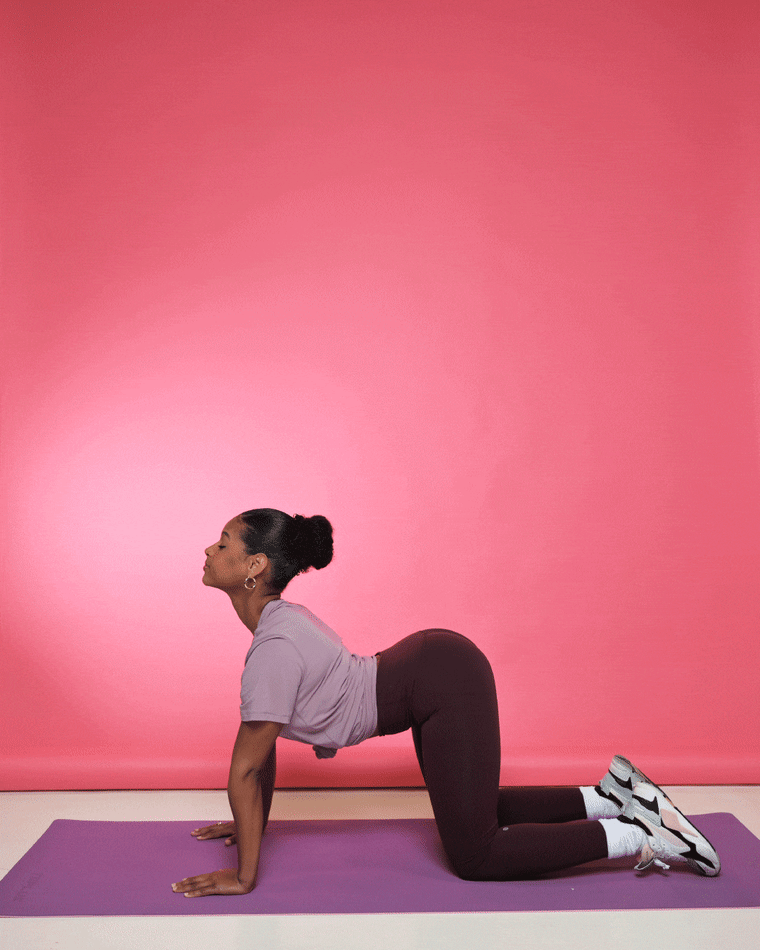 Tyler Essary / TODAY
Tyler Essary / TODAYCat cow
Start on your hands and knees with your hands flat on the ground below your shoulders and knees directly below your hips. Move into cow by breathing in, dropping your stomach toward the floor and looking up toward the ceiling, arching your back. Exhale as your move into cat pose, pulling your belly button toward your spine and rounding your back up toward the ceiling. Let your head drop toward the ground. Repeat 10 times.
 Tyler Essary / TODAY
Tyler Essary / TODAYSide plank
From a forearm plank position, turn your body to the left, balancing your weight on your right forearm and the edge of the right foot. Reach your left arm up into air, keeping the elbow bent. Stack your left foot on top of the right and pull your right side up away from the ground to work the entire right side of your body. Come back to forearm plank and repeat on the other side. Continue alternating sides, performing 10 repetitions on each side.
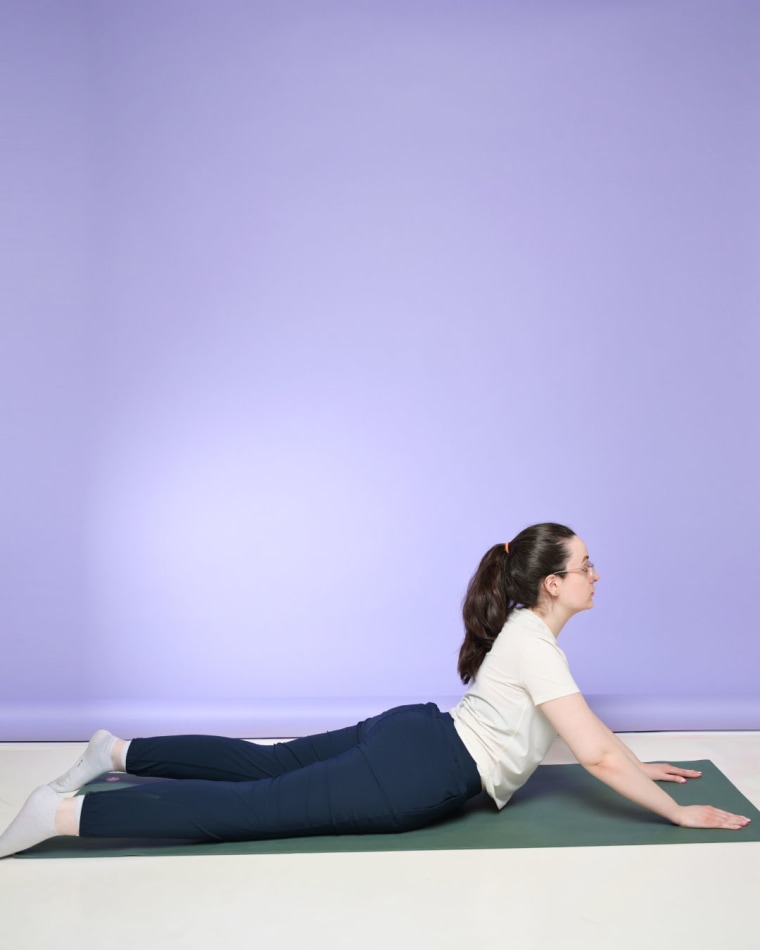 Tyler Essary
Tyler EssaryCobra
Lie face down on a yoga mat. Place both palms flat on the mat directly beneath your shoulders. Add a bend to your elbows, keeping them tucked into your sides. Inhale, then raise your chest off the mat as you exhale. Roll your shoulders back, keeping your neck neutral. Maintain the position for up to 30 seconds.
 Tyler Essary / TODAY
Tyler Essary / TODAYSeated spinal twist
Start in a seated position with your legs outstretched in front of you. Bend your right knee and cross your right leg over your left, resting your right foot flat on the ground near your left knee. Place your right hand on the floor behind you for support and hook your left arm around your right knee. Gently begin to twist your body toward the right from your core (not just your shoulders). Hold this for about 30 seconds, then repeat the stretch on the other side.
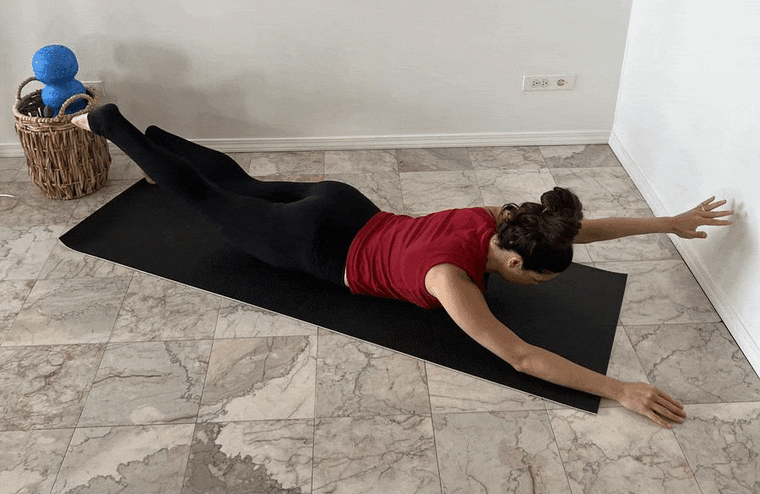
Swimmers
This exercise trains the back of the body to work in opposition to improve balance and spinal strength and mobility. Start by lying down on your stomach. Lift the right arm and the left leg off the ground. Then alternate, lifting the left arm and the right leg off the ground. Continue alternating, being sure to pull the abs in the entire time.
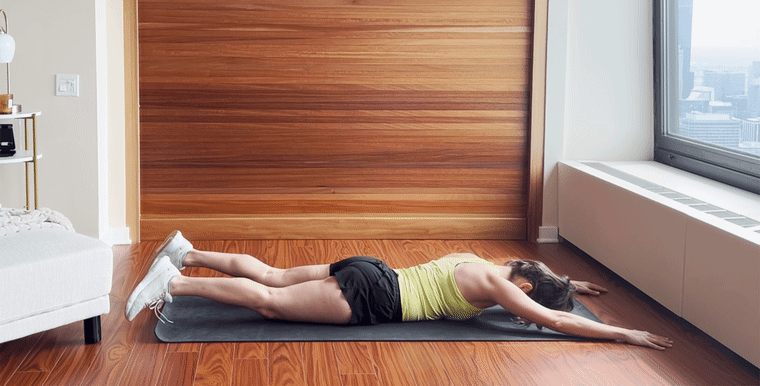
Superman
This exercise engages the entire back of the body, from the upper back to the bottom of the legs. Lifting up into this position teaches the posterior muscles to work together in tandem, with the shoulders lifting up the arms and the glutes, hamstrings and back working to lift the legs. Lie on your stomach and reach the arms forward and legs back. Open the legs as wide as the hips and the arms as wide as the shoulders. Pull the belly button in away from the ground to engage the abs. Relax the shoulders as you reach the arms up off of the ground and squeeze the quads as you lift the legs off the ground. Avoid putting too much pressure on the low back by ensuring that the abdominals stay contracted. All the muscles in the back of the body, from the calves to the upper back, will be engaged.
0 Comments